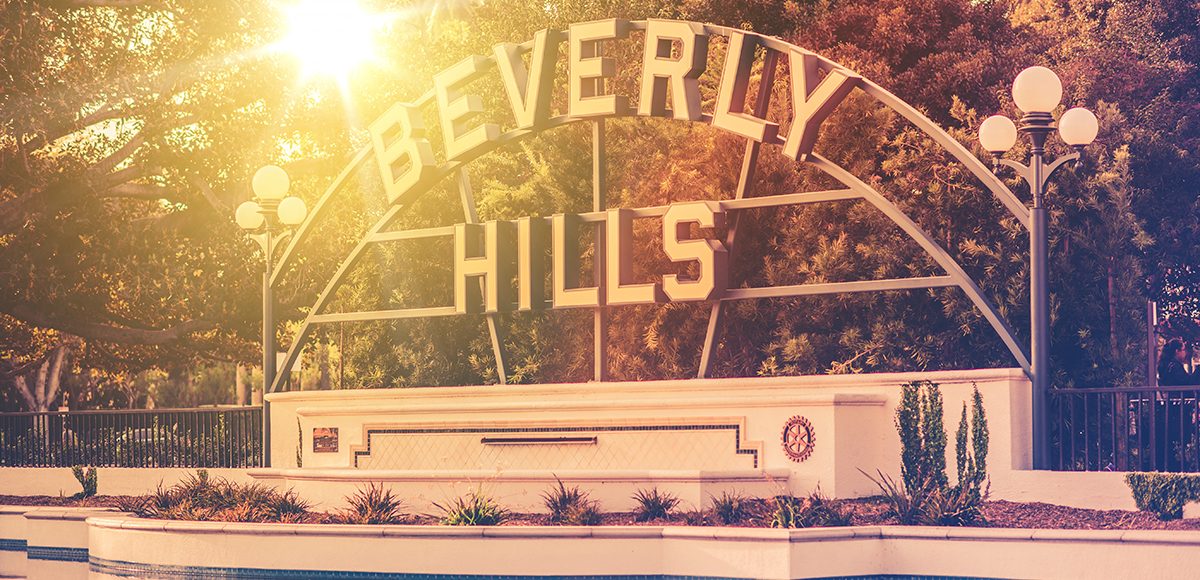Imagine creating a veritable arts district within Beverly Hills. That was one potential vision City leaders considered at this month’s meeting of the Strategic Planning Committee / Southeast Task Force.
As the push to revitalize the southeast part of Beverly Hills continues to gain momentum, the City is actively taking steps to position the area for success.
“We have an amazing opportunity to create a renewed sense of place in this region of the City,” Mayor John Mirisch told the Courier. “A cultural renaissance with a vibrant Arts and Theater District along with a reinvigorated Restaurant Row are all exciting possibilities that should be explored.”
In addition to the ongoing series of monthly meetings on how to best reinvigorate the area the Dec. 9 task force meeting focused on augmenting arts and culture two recent real estate acquisitions attest to the City’s commitment to acquire properties in key areas for future parking and economic development purposes.
Last month the City purchased the Clock Market building on Wilshire Boulevard as well as a South Robertson parcel which the City intends to use to create a parking structure.
According to The Schaffel Group Chairman Sy Schaffel, who represented the City for over three years in the challenging quest to locate and acquire a parcel for parking on South Robertson, the purchase of the 13,744-square-foot property for $10.1 million at 327-335 S. Robertson Blvd. is significant.
“This is a long time coming,” he said, underscoring that finding sellers who had a large enough parcel or who were willing to sell was very limited. “We’ve always needed additional parking.”
Schaffel said he anticipated the City would raze the current 6,000-square-foot building in 2020 in order to move forward with construction on a parking lot. The building currently houses six business tenants who lease on a month-to-month basis.
City spokesperson Keith Sterling told the Courier that at this moment, just one month after the City acquired the property, there were no specific plans for the site.
“The City could develop the site to help meet parking demands or other economic goals,” he said. “The City could also develop interim plans for use of the site, while longer- term development options are evaluated.”
Future use of the Clock Drive-in Market building at 8423 Wilshire Blvd., which the City paid $16.5 million to acquire, has yet to be determined. Sterling said the property, which is adjacent to where the Wilshire/La Cienega subway station is slated to open in 2023, could one day be utilized in conjunction with future parking or transportation infrastructure in the area.
“The City is undergoing a public process via the Strategic Planning Committee/ Southeast Task Force, which could better inform community goals and potential development opportunities via City investment and/or public-private partnerships,” Sterling said.
As to just what will greet the eyes of those who emerge from the subway station into Beverly Hills remains to be finalized, but general consensus of task force attendees appears to be that the area needs more foot traffic in order to help engender business success.
“Until you’re bringing in more people, I don’t think businesses can survive,” one participant said, noting that given the low foot traffic, businesses that open on Wilshire continue to struggle.
“I think the City has to find a way to make people more engaged,” added another attendee.
With the expansion of the Fine Art Commission to the Arts and Culture Commission this past June, the City is clearly supportive of enhancing the arts throughout Beverly Hills.
Although fewer than two dozen people attended last week’s task force meeting – which several people in attendance characterized as low attendance the consensus appeared to be that the area already naturally lent itself to having a greatly enhanced arts scene.
“I guess when I think about Wilshire, I think about theaters,” said one resident.
“You got them, use them,” noted another resident.
While the days of the dollar double-feature movie have long since slipped into the annals of time, residents noted that there was potential to truly reinvigorate the arts scene in the area. However, in the wake of the closure of Laemmle’s Beverly Hills Music Hall last month, residents voiced concern about the continued viability of the success of theaters in that area.
“If there really is no appetite for theaters, then I think we need to look elsewhere,” said City Councilman Julian Gold, who presided over the meeting.
A statement on Laemmle’s website reads: “There is a distinct possibility of a renaissance, and movies and moviegoers will return to 9036 Wilshire Blvd., but if it happens it will be after a hiatus and with different operators.”
When looking to the possibility of drawing in art galleries to the area which participants appeared to favor several attendees noted that the high rental costs made the possibility prohibitive.
Once again, as in previous task force meetings, the notion of allowing for higher density building in an effort to enliven the area came up, this time with a suggestion that a portion of the street-level space could be devoted to art galleries.
Of course, from South Robertson to La Cienega, the character of the neighborhoods is distinct, and the area’s entire evolution will ultimately be impacted with the opening of the subway portal at Wilshire and La Cienega in 2023.
“I think it’s important that we do things that resonate with our community,” said Chair Architectural Commission Chair Sharon Persovski. “We need to visualize where we want things to go and start defining the area.”
The City is actively encouraging interested parties to attend the series of monthly Task Force meetings in an effort to gather as much community input as possible in moving forward to revitalize the Southeast part of the City.
As rents have continued to increase, the area has seen a marked diminishment in the number of mom-and-pop stores that line the streets. And with that loss, the flavor of the area has definitely changed. The future, of course, will be up to those who write it.







